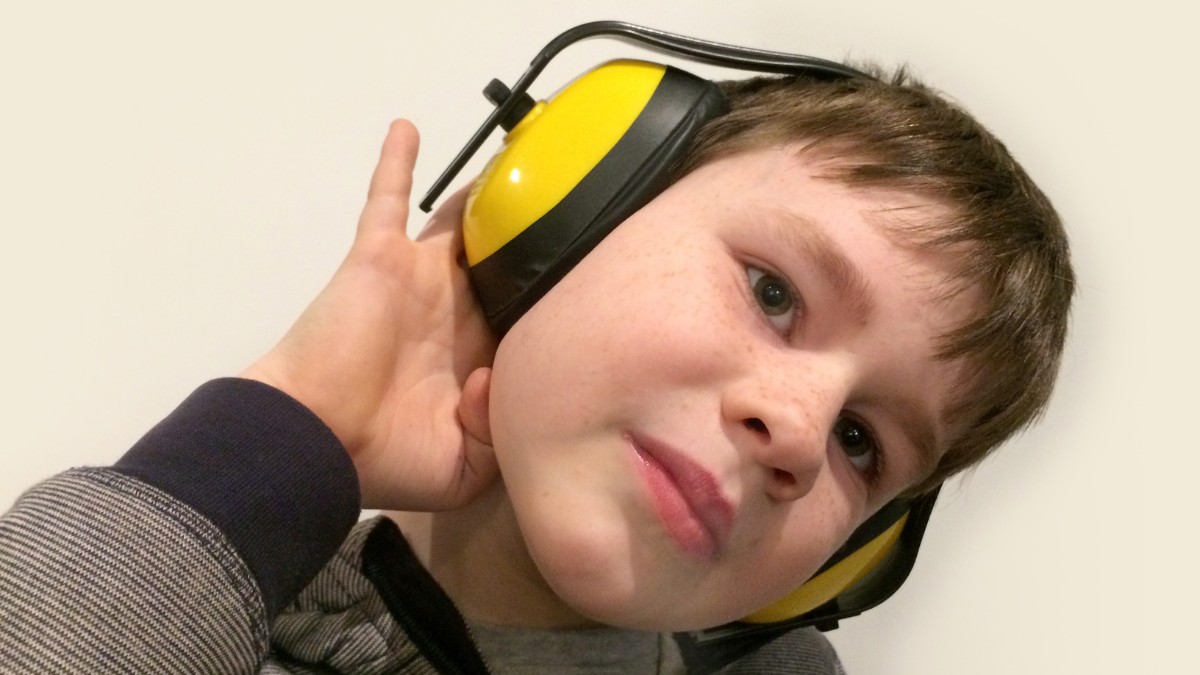Key Points:
- Auditory processing disorder (APD) affects how the brain interprets sounds, not hearing ability itself.
- APD often overlaps with autism, causing issues like sound sensitivity, delayed response to verbal cues, or difficulty following conversations.
- Recognizing early signs of auditory processing challenges can help tailor more effective support strategies.
You call your child’s name. No response. You speak louder—still nothing. Moments later, they answer like nothing happened. This isn’t rudeness or inattention. Many children with autism struggle to process sounds correctly. Understanding auditory processing challenges helps shift frustration into empathy and leads to more effective support strategies.
What Is Auditory Processing Disorder (APD)?
Auditory Processing Disorder is a condition where the brain has trouble interpreting sounds. This is not due to hearing loss—children with APD typically pass standard hearing tests. The challenge lies in what happens after the ears detect the sound.
For autistic children, auditory processing issues can intensify communication struggles and social difficulties. Many autistic individuals already experience differences in how they process sensory input, and sound is a major part of that sensory world.
When auditory processing is disrupted, even a simple instruction can become confusing. Background noise can feel unbearable, and verbal interactions may seem fragmented or unclear.
How Does APD Affect Children on the Spectrum?
Auditory processing difficulties can amplify many traits already associated with autism. A child with autism and APD might experience:
- Difficulty understanding spoken language, especially in noisy settings
- Seeming to “ignore” or not respond when spoken to
- Delays in speech and language development
- Strong reactions to certain sounds (crying, covering ears)
- Trouble following multi-step directions
These auditory autism symptoms may look like inattention or noncompliance, but the root issue is neurological, not behavioral. That distinction is important for building the right support system at home and school.

Common Signs of Auditory Processing Disorder in Autism
The symptoms of APD in autism can look different depending on the child’s age, environment, and communication abilities. However, certain patterns tend to emerge.
Let’s look at specific signs to watch for:
1. Delayed or No Response to Verbal Cues
Even if your child hears their name, they may not respond. This isn’t defiance—it might take extra time for their brain to interpret and act on the sound.
2. Difficulty Following Instructions
Especially in environments with competing sounds, your child may struggle to follow spoken directions. Multi-step instructions are particularly difficult.
3. Sensitivity to Everyday Sounds
Vacuum cleaners, alarms, or even crowded chatter can feel painfully loud. This may trigger meltdowns, anxiety, or avoidance behaviors.
4. Asking for Repetition or Saying “What?” Often
Children with APD may need directions repeated several times. They might also repeat your words back without showing full comprehension (echolalia).
5. Mishearing or Confusing Similar Words
“Cat” might be heard as “cap.” This confusion affects learning and communication, especially in group settings like classrooms.
6. Appearing Distracted or Zoned Out
Because their brains are working overtime to decode sounds, children with APD might appear to “tune out,” especially in overstimulating environments.
What Causes Auditory Processing Issues in Autism?
The exact cause of APD in autism isn’t fully understood, but researchers believe it relates to differences in how the brain integrates sensory input. Autistic individuals often show heightened or reduced sensitivity across various senses—this is part of what’s called sensory processing disorder. APD is essentially a subtype of sensory processing challenges focused on sound.
Some contributing factors may include:
- Delayed auditory maturation
- Differences in brain connectivity
- Difficulty filtering out irrelevant sounds
- Co-occurring speech or language disorders
While APD can occur independently, its overlap with autism is common enough that recognizing auditory autism symptoms should be part of early screening and intervention.
How Are Auditory Autism Symptoms Diagnosed?
Because APD and autism share many overlapping behaviors, diagnosis can be tricky. Often, a collaborative team of audiologists, speech therapists, and developmental specialists will work together.
Evaluation may include:
- Standard hearing tests (to rule out hearing loss)
- Auditory processing assessments
- Parent questionnaires and observations
- Speech and language evaluations
The goal isn’t just to diagnose but to understand how the symptoms affect your child’s daily life, then build a treatment plan that supports those needs.
How Can Parents Help a Child with APD and Autism?
Supporting a child with both autism and auditory processing challenges involves adapting the environment and communication style to reduce overwhelm and increase clarity. Here are some key strategies.
Create a Low-Stress Listening Environment
Minimize background noise whenever possible. Turn off the TV or music when speaking to your child. Quieter environments help reduce auditory overload and improve their ability to process language.
Use soft lighting and predictable spaces. Calm surroundings reduce overall sensory stress and make it easier for your child to focus on verbal input and communication.
Simplify Verbal Instructions
Break instructions into small, clear steps. Instead of giving three directions at once, give one at a time and wait for your child to complete each one before moving on.
Pair spoken words with gestures or visuals. This gives your child more than one way to understand what you’re saying, reducing confusion and improving comprehension.
Use Visual Supports
Visuals are essential tools. Use picture cards, written schedules, or illustrated task charts to supplement spoken language. They help bridge gaps when auditory processing becomes challenging.
Visual cues provide consistency. Even if your child doesn’t process your voice right away, they can rely on visual information to understand what’s expected.
Practice Repetition and Routine
Children with APD often need repetition to fully understand spoken language. Repeat instructions calmly and consistently. Avoid showing frustration—it takes time to process sound.
Establish daily routines. Predictable patterns reduce cognitive load and make it easier for your child to anticipate and understand verbal cues in familiar situations.
Be Patient With Communication
Give your child extra time to respond. Their brain may need a few more seconds to interpret what you’ve said. Don’t rush or repeat too quickly.
Avoid correcting every misheard word. Instead, model the correct version naturally. Over time, your child will begin to make stronger connections between sounds and meaning.
Work With Professionals
Partnering with specialists is crucial. Speech-language pathologists can evaluate your child’s auditory skills and provide strategies tailored to their needs.
ABA therapists can also help. They create structured environments where auditory instructions are paired with reinforcement, visuals, and repetition, helping your child learn how to respond more reliably over time.
Encourage Self-Advocacy
As your child gets older, help them recognize when sounds are overwhelming or instructions are unclear. Teach them to ask for repetition or request a quieter space if needed.
Self-advocacy builds confidence. Knowing how to express their needs reduces frustration, improves classroom engagement, and strengthens social interactions in everyday settings.

Can ABA Therapy Help with Auditory Autism Symptoms?
Yes, Applied Behavior Analysis (ABA) therapy can play a valuable role in managing auditory-related challenges in autism. While ABA doesn’t “cure” auditory processing disorder, it helps children develop coping strategies, improve communication, and reduce behaviors triggered by sensory overload.
ABA therapists use evidence-based techniques to teach:
- How to follow verbal instructions
- How to use alternative forms of communication
- How to self-regulate when overstimulated
- How to respond to social cues in noisy environments
ABA is especially helpful when therapy plans are individualized to address sensory sensitivities alongside behavioral goals.
Personalized ABA Support for Auditory Challenges: Empower ABA
If your child is struggling with sound sensitivity, communication issues, or following verbal directions, Empower ABA can help.
Empower ABA offers individualized ABA therapy in New York, New Jersey, and Virginia that addresses both behavioral challenges and sensory processing issues, like those tied to auditory processing. Our team works closely with families to help children develop the tools they need to thrive in school, home, and social settings.
Through customized programs, your child can:
- Learn to better respond to spoken cues
- Reduce anxiety caused by loud or chaotic environments
- Build communication skills, even when auditory processing is a challenge
- Improve focus, attention, and daily routines
Don’t navigate these challenges alone. With support from Empower ABA, your child can make real progress. Contact us today to learn more about how ABA therapy can support your child’s journey with autism and auditory processing difficulties.

